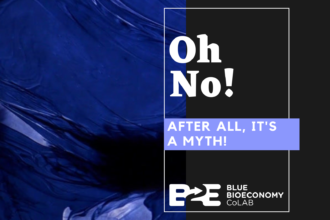B2E Technological Sonar Initiative #25
From revolutionary nutrition for larvae to AI genetic engineering in aquaculture, explore the latest innovations. Discover the secrets of preparing meat substitutes with frozen algae or the genetically engineered marine bacteria to produce biomaterials. So, don’t miss another edition of B2E’s Technological Sonar… It’s the technological revolution in the marine world!
AQUACULTURE
Gel structure to facilitate live feed substitution for early life stages of aquatic organisms
A nutrimental complement suitable for larvae of shrimp or fish is disclosed. The nutrimental complement comprises a particulate gel structure comprising agar, an attractant and water; and an aqueous medium comprising at least one salt. The particulate gel structure may be formed into gelled particles, e.g., granules, and the gelled particles may be added to the aqueous medium. The invention also relates to a method of preparing the nutrimental complement and a method of co-feeding the nutrimental complement to shrimp larvae or fish larvae with at least one wet or dry feed, e.g., a complete wet or dry feed.
Espacenet
Discover more here.
Converting low value fibre into high value protein for aquafeeds
DBug, a UK-based startup, is using insects as bioprocessing agents to convert soy and rapeseed byproducts into high value mealworm protein for use in the aquafeed, neonate and pet food markets.
TheFishSite
Discover more here.
A feed additive for increasing omega-3/omega-6 polyunsaturated fatty acids ratio in aquatic animals
This invention provides an animal feed additive for aquatic animals comprising a combination of capsaicinoid, piperine, gingerol, and a compound selected from cinnamaldehyde, a curcuminoid, and a mixture thereof, and at least one feed acceptable excipient. It is also provided the use of the combination, an animal feed additive for aquatic animals or the aquaculture feed comprising the combination for increasing the amount of long chain omega 3 polyunsaturated fatty acids in total lipids, or for increasing the ratio of omega 3/omega 6 polyunsaturated fatty acids in total lipids, or both of them, in aquatic animals.
Espacenet
Discover more here.
LIVING MARINE RESOURCES
Use of freshly frozen seaweed in preparing meat and meat substitute products
The current invention relates to the use of freshly frozen seaweed, preferably freshly frozen Himanthalia elongata, for preparing a food product. The resulting food product is preferably a meat (substitute) with a high amount of seaweed yet having an excellent sensory profile and/or shelf-life. The use of freshly frozen seaweed may also provide a meat (substitute) product with improved health profile.
Espacenet
Discover more here.
Insect producer to team up with global food giant
Protix, a leading producer of insects for uses including aquafeeds, can secured a double deal with Tyson, one of the world’s largest food companies.
TheFishSite
Discover more here.
MARINE BIOTECHNOLOGY
Targeted gene technology comes to crustacea aquaculture
AI-powered gene editing research has received funding from the Israel Innovation Authority (IIA) for crustacea aquaculture application in the hopes of meeting growing global food security and sustainability demands.
TheFishSite
Discover more here.
Production and Partial Characterization of Bioactive Compounds from Underutilized Marine Bioresources for a Cosmetic Formulation: Cytotoxicity and Bioactivity Evaluation
In this research, hydrolysed collagen, glycogen and hyaluronic acid were obtained through the biotechnological valorisation of underused marine bio-resources. Hydrolyzed collagen was obtained by hydrolyzing blue shark collagen with papain and ultrafiltration. Glycogen was isolated from industrial mussel cooking wastewaters through ultrafiltration, precipitation, and selective polysaccharide separation. Hyaluronic acid was produced by fermentation, purification, and depolymerization. The main objective was to test the feasibility of including these three biomolecules in a cosmetic formulation as bioactive compounds.
NCBI
Discover more here.
Genetic engineering of marine bacteria for biomaterial production, probiotic use in aquaculture and marine environmental restoration
In this invention are provided compositions, including products of manufacture and kits, and methods, for producing enhanced marine bacterial strains with the ability to produce stimulatory products that amplify their probiotic effects for reef restoration and biotechnology applications. In alternative embodiments, genetically engineered marine bacteria (such as Nereida, Vibrio, Pseudoalteromonas and/or Roseobacter bacterium) as provided herein, and compositions, products of manufacture, kits and methods as provided herein, are used in biomaterial production, probiotic use in aquaculture and/or for environmental restoration purposes.
Espacenet
Discover more here.





